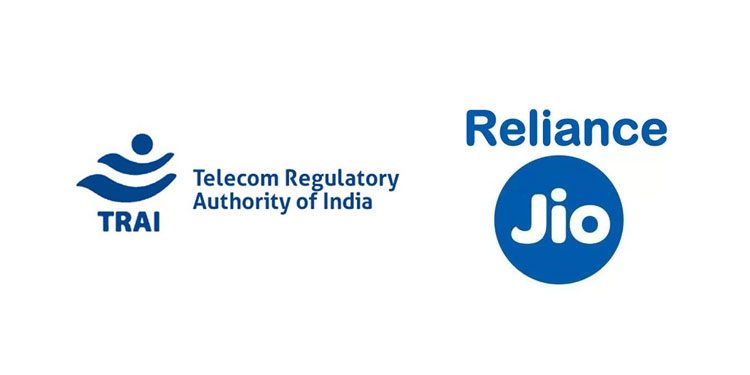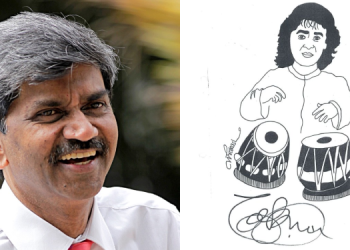With TRAI issuing a Consultation Paper on Tariff related issues for Broadcasting and Cable services, the dust settled after math of the NTO has erupted against in to storm with cable operators and consumer organizations on one side warring against channel owners on the other side.
The IBF is lobbying its best to keep things going as such with the existing practices of NTO, while the Cable Operators are up against broadcasters dictating pricing of channels and bouquets. As part of the ongoing consultation process, almost all consumer and cable organizations have called on TRAI to ensure that individual channels are provided to them at reasonable rates, and to prevent broadcasters from ‘forcing’ them to buy channel packs and bouquets to get access to individual channels at reasonable prices.
Mukesh Ambani-led Reliance Jio had jolted the Broadcasts effort by decided to side with cable operators and consumer organizations, instead of going with broadcasters and channel owners, despite the Reliance Group’s stake in TV18 Broadcast. Their stand on this matter was keenly awaited, given that the group has stakes on both sides.
Reliance Jio owns TV18 Broadcast, one of the four big broadcasting firms in India, and recently acquired majority stakes in DEN Networks and Hathway, two of the top cable networks in the country. Going by the response submitted by the company to the TRAI, Reliance Group seems to have decided to side with the consumer organizations and cable operators in this battle, and not with the broadcasters.
In its submission, it accused broadcasters (channel owners) of misusing the new tariff order to ram unwanted channels down the throats of consumers and cable operators by making individual channels costly in comparison to packs and bouquets.
“..the broadcasters have misused the flexibility provided to them and have seized the opportunity to maximize revenue,” it said. “This has increased the monthly subscription cost for the end customer significantly and they are unable to exercise choice in real terms.”
Reliance Jio then went on to explain how broadcasters were forcing consumers to buy unwanted channels and filling up their channel quotas.
“The intent of Tariff Order of 2017 was to enable the subscribers to choose and pay for the channels that they want to watch and not be saddled with a host of unwanted channels. However, this objective has not been achieved. In fact, broadcasters have misused this flexibility provided to them and continue to push unwanted channels to customers by bundling them with their popular channels.
“Broadcasters have increased the prices of their most popular TV channels (“driver channels”) to Rs.19/ or close to Rs.19/- for inclusion in bouquets. The less popular channels which have low demand have been priced at nominal amounts as low as 50 paise or Re. 1/- and even FTA channels have been converted to Pay channels.
“These less popular channels and the driver channels have been bundled into bouquets, which are offered at deep discounts in the range of 30-70% as compared to the sum of their a-la-carte prices. Due to the vast difference between the a-la-carte prices and the bouquet price, a customer will naturally opt for a bouquet.”
It pointed out that most of the popular (driver) channels are priced in the Rs 19-22 range (including tax).
“On the other hand, the prices of bouquets have been deeply discounted sometimes even upto 70% of sum of the a-la-carte prices of the channels in the bouquet. This leaves the customer with no other option but to opt for a bouquet. The non-popular channels are so nominally priced that discount on their individual price is negligible.
“In effect, it is the prices of the driver channels that are being deeply discounted under the pretext of a bouquet offering and therefore the a-la-carte prices are not a reflection of their true prices.
“This malpractice can be curbed by interlinking the a-la-carte channel prices and bouquet prices. The maximum permissible discount on a bouquet should be fixed and this should be linked to the sum of a-la carte prices of the channels that are part of the said bouquet,” it added.
Because of such ‘malpractice’, said Jio, consumers are being forced to pay more for their content after the new tariff order came into effect.
“The tariffs under the new regime have gone up considerably for the end consumers. They customer is ending up paying much more for a lesser number of channels. This is on account of the unreasonable hike in the prices by the broadcasters…
“The intent of the NTO 2017 was to enable more choice for the customer and reduce the cost for the customer by effective selection of channels. Channel bundling and deep discounting continues, with the added increase in channel prices the customer has ended up paying more than in the previous regime.”
Without naming names, Reliance zeroed in on ‘larger broadcasters’ and accused them of hurting smaller competitors by filling up consumers’ channel slots with junk.
“Price sensitive customers tend to opt for the bouquets of the larger broadcasters that carry the more popular or driver channels, by opting for bouquets the subscriber gets saddled with lots of unwanted channels which consumes their NCF limits.
“As a consequence, the regional and niche channels by smaller broadcasters are not opted by subscribers due to budgetary constraints. Hence, the smaller broadcasters are losing subscribers due to the non-level playing field created by the absence of a cap on the discounts on bouquets,” it pointed out.
The consultation by TRAI is currently open, and individual consumers too can write in their responses and suggestions before Oct 7 on the email ID [email protected]

















